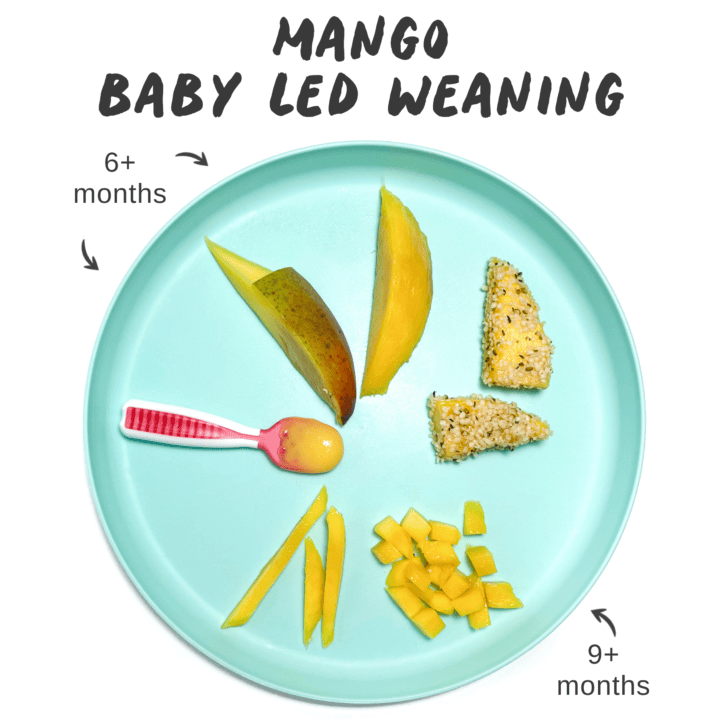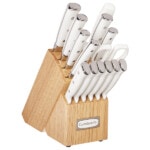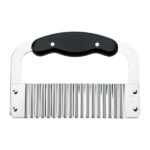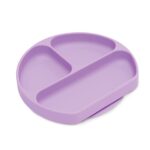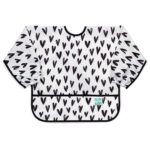Mango for Baby-Led Weaning
Mango magic for your baby? Absolutely! As your little one starts exploring solids, offering a range of flavors helps build a love for food early on. Mango’s smooth, tender texture and tropical sweetness make it a delicious and baby-friendly option that’s sure to bring a smile.
Medically reviewed and cowritten by Jamie Johnson, Registered Dietitian Nutritionist (RDN), and Lauren Braaten, Pediatric Occupational Therapist (OT).
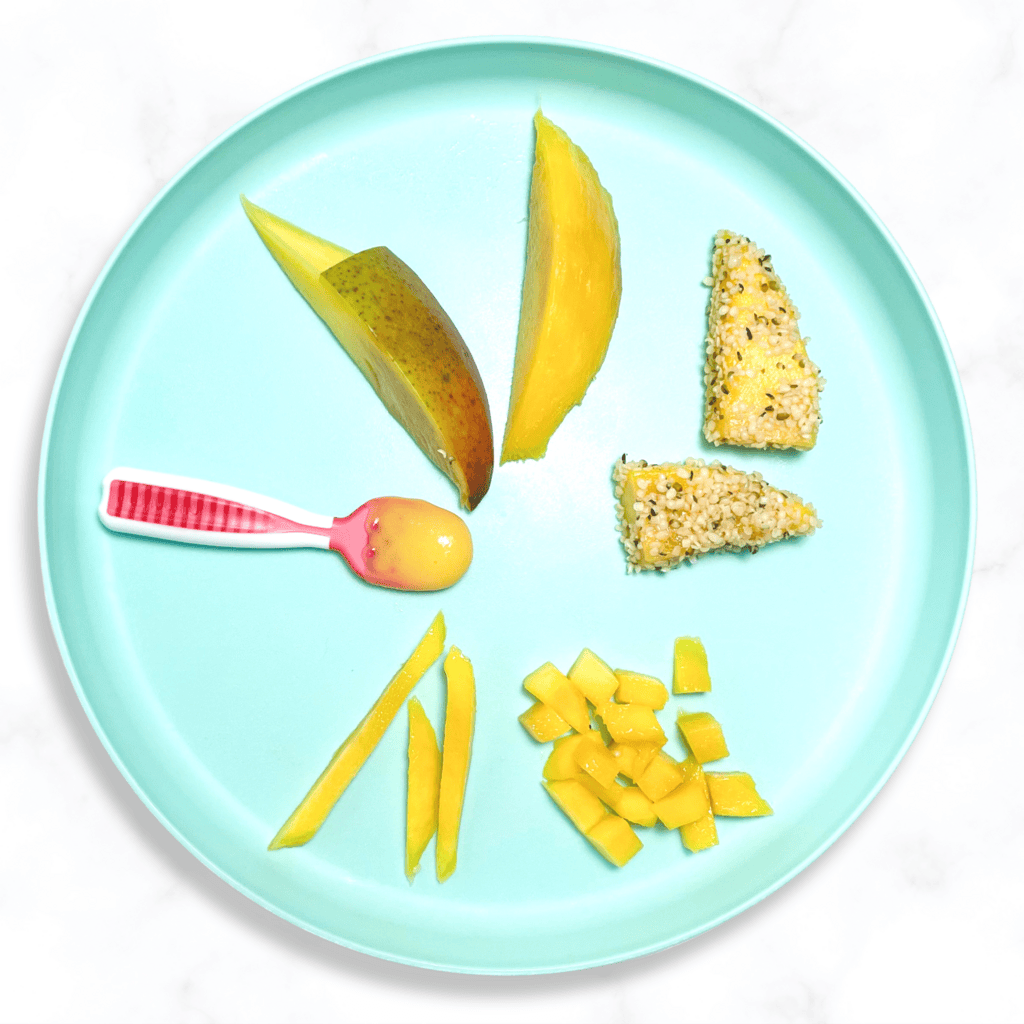
Mango for BLW Video
Curious about how to serve mango to your baby?
I’ve got you!
Mango is one of those fruits that babies love—it’s bright, juicy, and oh-so-sweet. It’s also super versatile: serve it on its own, blend it into a puree, or mix it into yogurt, oatmeal, or smoothies for a little extra flavor. Just like kiwi or peaches, mango can be a fun and tasty addition to your baby’s plate.
That said, mango can be slippery and tricky for tiny hands—so let’s talk about safe, easy ways to serve it!
First time making homemade baby food? Then, I would suggest that you start by reading my very in-depth Complete Guide to Baby-Led Weaning. You can also check out my best-selling cookbook for even more information and recipes!
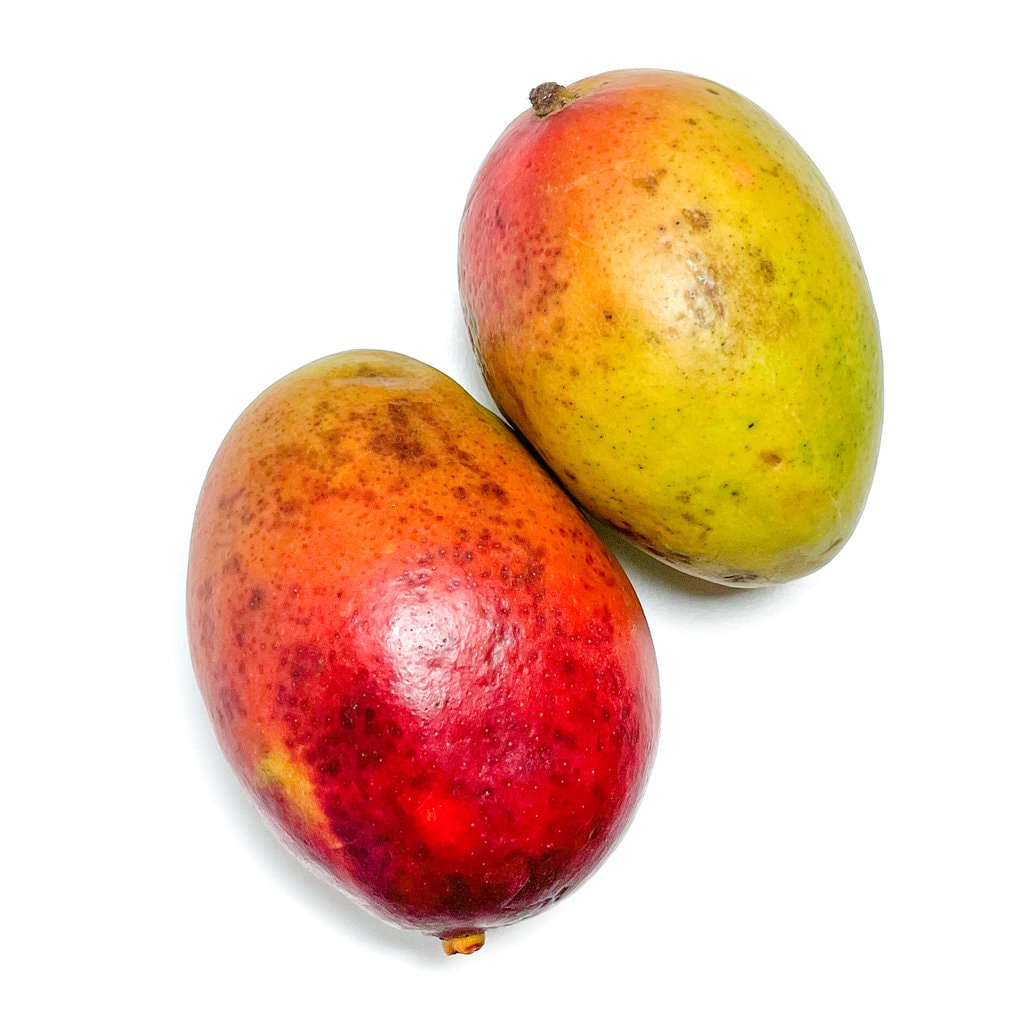
Spices to Add
You can serve mango plain initially, but adding spices as your baby or toddler gets used to the flavor is a great way to keep expanding their palates. Warm spices such as cinnamon, clove, cardamon, or nutmeg pair especially well with mangoes.
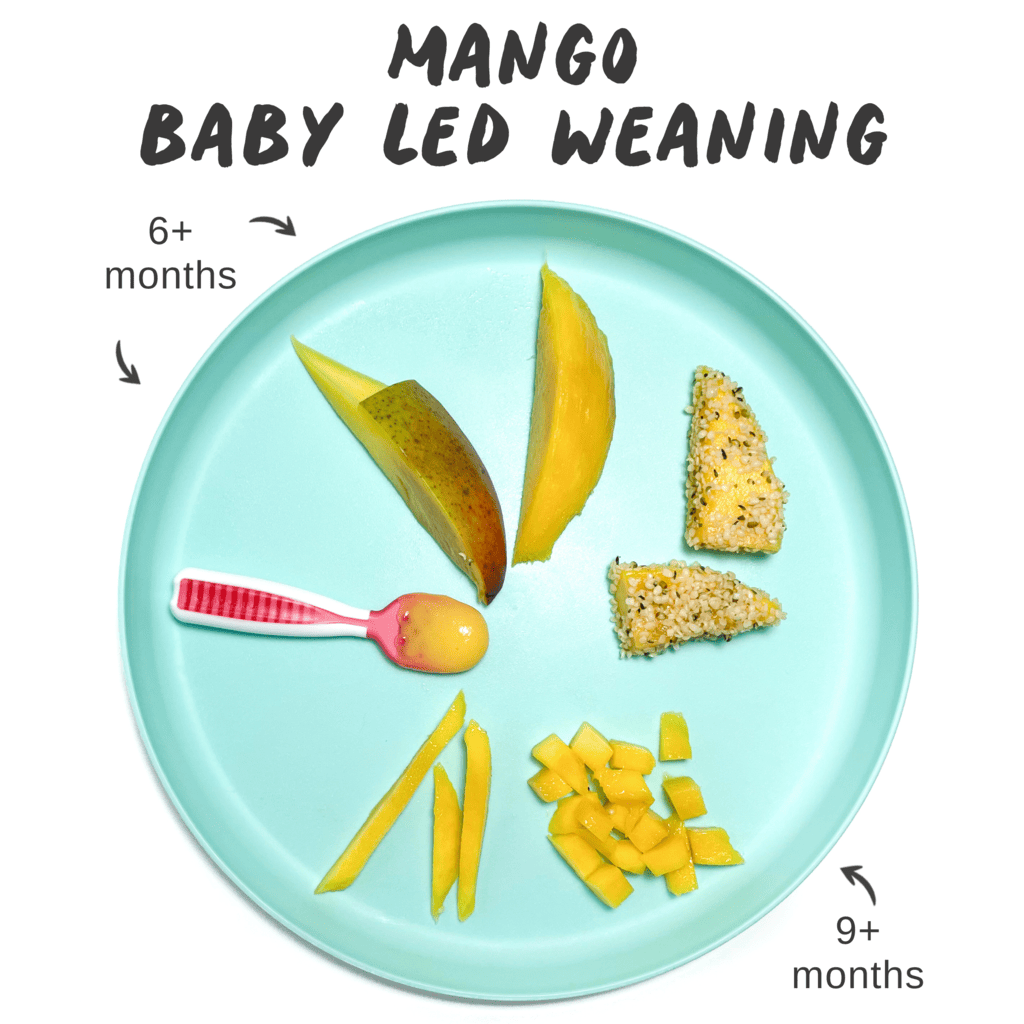
How to Prepare Mangos for Baby-Led Weaning
Mangos are firm and slippery, so make sure to offer soft, ripe mango, served as a whole mango pit or sliced into long spears, about the thickness of an adult finger. Serving mangoes this way will help decrease the risk of choking on this fruit for beginning eaters.
How to Serve Mango for Baby-Led Weaning
Mangoes can be a choking hazard for your baby, regardless of whether or not you are doing baby-led weaning or introducing soft pieces of food during the finger foods stage at 9 months. It’s important to cut and serve them properly.
Thick spears or whole mango pit, peeled and with most of the flesh removed, or as a puree (6-9 months): These options will be easier for baby to grab and less of a choking hazard than chopped or cubed mango. Roll them in hemp seeds, chia seeds, or crushed coconut or puffs to help baby grasp them. Gnawing on the mango pit helps baby develop their oral motor skills and can feel good on teething gums. You can also serve your baby a mango puree on a self-feeding spoon.
Spears or chopped pieces (9+ months): As baby develops their pincer grasp, offer chopped mango pieces to help them practice refining this skill. You can also continue to offer mango spears or offer mango pre-loaded on a fork.
Mango Puree: You can offer purees and still allow your baby to lead the way with self-feeding by offering the puree on a self-feeding spoon, by placing a few spoonfuls of the puree directly on the tray or in a bowl for your baby to dip their fingers into, or you can even use the puree as a dip for solid foods such a banana or piece of toast.
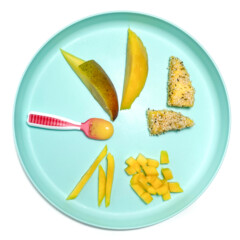
Get the recipe: Mango for Baby-Led Weaning
Ingredients
- 1/2 ripe mango
- pinch cinnamon optional
Instructions
- Core and Peel the mango. Cut mango into age-appropriate sizes and serve to baby.
Notes
- Place a few spoonfuls of purees directly on the tray or in a bowl for your baby to dip fingers into. Model how to dip your fingers into the puree and bring them to your mouth, to taste some.
- Offer your baby a pre-loaded self-feeding utensil and hold it out for them to grasp or set on their tray.
- Use a solid food as a dipper. You can also offer a soft stick-shaped piece of food, such as a soft roasted carrot or bread lightly toasted and cut into strips to dip into the puree.
Did you make this recipe?
Tag @babyfoode on Instagram and hashtag it #babyfoode!
Frequently Asked Questions
They certainly can be – it’s up to you! Mango can be given to your baby as soon as they start eating solid foods at around six months.
No, mangoes are not a common allergen, however, as with any food, start with a small portion and be aware of any signs that might be an allergic reaction after introducing it.
Yes, mangoes can be a choking hazard, especially when served in cubes. Make sure to serve ripe mangoes, which will be soft, in thin slices or the mango pit.
You don’t need to cook mango to serve to babies, although if you want, you can gently steam the mangoes to help them break down a little.

